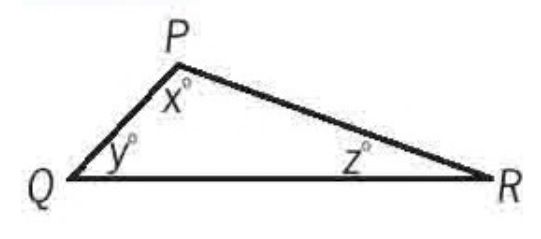GMAT –Quantitative (Data Sufficiency) Sample Questions Set-3
Categories: GMAT (Graduate Management Admission Test)

Each data sufficiency problem consists of a question and two statements, labeled (1) and (2), which contain certain data. Using these data and your knowledge of mathematics and everyday facts (such as the number of days in July or the meaning of the word counterclockwise), decide whether the data given are sufficient for answering the question and then indicate one of the following answer choices:
A. Statement (1) ALONE is sufficient, but statement (2) alone is not sufficient.
B. Statement (2) ALONE is sufficient, but statement (1) alone is not sufficient.
C. BOTH statements TOGETHER are sufficient, but NEITHER statement ALONE is sufficient.
D. EACH statement ALONE is sufficient.
E. Statements (1) and (2) TOGETHER are NOT sufficient.
Note: In data sufficiency problems that ask for the value of a quantity, the data given in the statements are sufficient only when it is possible to determine exactly one numerical value for the quantity.
Example: In the above triangle PQR, what is the value of x?
(1) PQ=PR
(2) y=40
Explanation- According to statement (1) PQ = PR; therefore, APQR is isosceles and y=z. Since x+y+z=180, it follows that x+2y= 180. Since statement (1) does not give a value for y, you cannot answer the question using statement (1) alone. According to statement (2), y=40; therefore, x + z = 140. Since statement (2) does not give a value for z, you cannot answer the question using statement (2) alone. Using both statements together, since x + 2y = 180 and the value of y is given, you can find the value of x. Therefore, BOTH statements (1) and (2) TOGETHER are sufficient to answer the question, but NEITHER statement ALONE is sufficient.
Numbers: All numbers used are real numbers.
Figures: 1. Figures conform to the information given in the question, but will not necessarily conform to the additional information given in statements (1) and (2).
2. Lines shown as straight are straight, and lines that appear jagged are also straight.
3. The positions of points, angles, regions, etc., exist in the order shown, and angle measures are greater than zero.
4. All figures lie in a plane unless otherwise indicated.
Question.1. If the units digit of integer n is greater than 2, what is the units digit of n?
(1) The units digit of n is the same as the units digit of n2.
(2) The units digit of n is the same as the units digit of n3.
Answer: (e)
Question.2. What is the value of the integer p?
(1) Each of the integers 2, 3, and 5 is a factor of p.
(2) Each of the integers 2, 5, and 7 is a factor of p.
Answer: (e)
Question.3. If the length of Wanda's telephone call was rounded up to the nearest whole minute by her Telephone Company, then Wanda was charged for how many minutes for her telephone call?
(1) The total charge for Wanda's telephone call was $6.50.
(2) Wanda was charged $0.50 more for the first minute of the telephone call than for each minute after the first.
Answer: (e)
Question.4. What is the perimeter of isosceles triangle MNP?
(1) MN=16
(2) NP=20
Answer: (e)
Question.5. In a survey of retailers, what percent had purchased computers for business purposes?
(1) 85 percent of the retailers surveyed who owned their own store had purchased computers for business purposes.
(2) 40 percent of the retailers surveyed owned their own store.
Answer: (e)